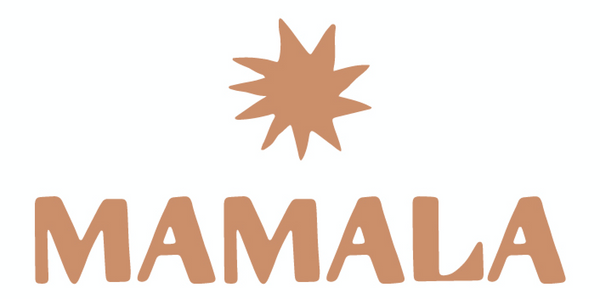The Sacred Practice of Belly Binding: Honoring the Postpartum Body
At MAMALA, we believe that the postpartum period is sacred—a time for deep rest, loving care, and intentional healing. One of the most beautiful, time-honored practices to support new mothers during this tender season is belly binding.
Used across cultures for centuries, belly binding is more than just a trend—it’s a ritual of restoration. Below, we’ll explore what belly binding is, its physical, physiological, and psychological benefits, how long to do it, and whether it can be done on your own.
What Is Belly Binding?
Belly binding involves wrapping the abdomen with cloth or a supportive binder after childbirth. This gentle compression supports the body’s natural healing processes and can be a powerful tool in a woman’s postpartum care toolkit.
Traditionally practiced in many parts of the world—from the Bengkung wrap in Malaysia to the faja in Latin America—belly binding is both practical and deeply symbolic. It’s a way to honor the transformation a mother’s body has gone through, while supporting her healing on every level.
The Benefits of Belly Binding
1. Physical Benefits
-
Core & Pelvic Support: Pregnancy stretches the abdominal muscles and may cause separation (diastasis recti). Binding gently supports the return of these muscles and stabilizes the pelvic floor.
-
Back & Hip Stability: Postpartum hormones like relaxin loosen the joints. Binding provides external support to reduce pain and prevent misalignment.
-
Improved Posture: Feeding, holding, and rocking a baby often leads to slouching. A wrap helps encourage upright posture and reduces strain on the back and shoulders.
-
Reduces Swelling: Compression helps flush out retained fluids from pregnancy.
-
Supports Uterine Involution: Gentle pressure encourages the uterus to contract back to its original size and minimizes postpartum bleeding.
-
Provides Containment: Many women experience a sense of “emptiness” after birth. Binding offers a feeling of being physically held—supporting emotional and energetic grounding.
2. Physiological Benefits
-
Enhances Circulation: Increased blood flow supports tissue repair and speeds up healing.
-
Supports Digestive Function: As organs shift back into place, gentle compression may help reduce bloating and promote comfort.
-
Encourages Alignment: Helps guide the body back into balance as it adjusts post-pregnancy.
3. Psychological Benefits
-
Promotes a Sense of Calm: The act of being wrapped and held reduces anxiety, offering a sense of safety and containment.
-
Supports Rest and Stillness: With proper support, new mothers can rest more comfortably and focus on healing.
-
Honors Ancestral Wisdom: Belly binding connects us to generations of women who’ve walked this path and embraced nurturing rituals postpartum.
-
Invites a Ritual of Self-Care: Taking a few moments each day to bind can become a mindful, loving act of devotion to the body that birthed new life.
When and How Long Should You Belly Bind?
Ideally, belly binding begins within the first week postpartum after a vaginal birth, or after C-section incision healing (typically around 2 weeks, with a care provider's guidance).
-
Duration: Most women bind for 6–8 hours per day, for 4–6 weeks. Some may continue longer, depending on how they feel.
-
Important: Binding should feel supportive, not restrictive. If you experience pain, pelvic pressure, or difficulty breathing, the wrap may be too tight.
Can You Do Belly Binding Yourself?
Yes—many mothers do! There are different types of wraps to suit different needs:
-
Modern Velcro or Elastic Wraps: Easy to use, convenient, and adjustable.
-
Traditional Cloth Binding (like Bengkung): This method uses a long piece of fabric, wrapped intricately around the torso from hips to ribs. It may require help at first, but with practice, you can self-wrap.
At MAMALA, we often recommend traditional methods because of the care and intention woven into the ritual itself—but the best method is the one that works for you and your healing journey.
A Note of Caution
Belly binding is a gentle and supportive tool, but it’s not for everyone. You should avoid or modify binding if you have:
-
A healing C-section incision (wait until cleared by your provider)
-
High blood pressure
-
Pelvic organ prolapse or dysfunction
Always consult with your postpartum care provider, pelvic floor therapist, or birthworker before beginning.
In Closing: Why We Bind
To bind is to honor the body that birthed life. It is a gesture of support, of reverence, and of love—a daily reminder that mothers deserve to be held, too.
At MAMALA, we see belly binding as more than just a wrap—it’s a symbol of care. A returning to the body. A coming home.

